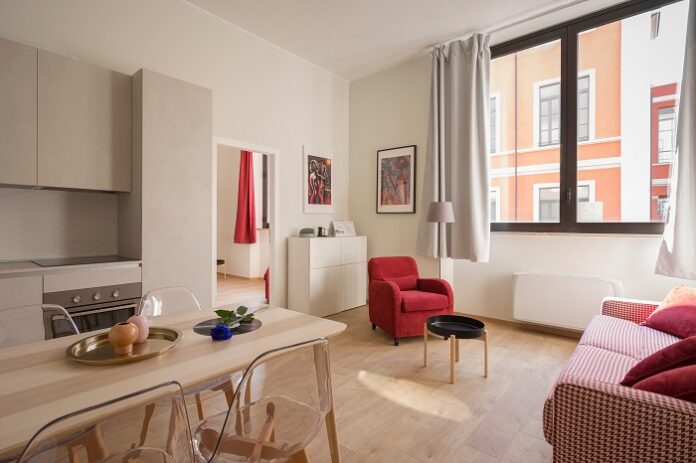The indoor space is the most important element of your home because it is where you spend most of your time. So, it needs to be well-kept and maintained in order to provide you with the comfort you are seeking from it.
While you may be doing your best to make your indoors a better place, you might still miss some things. From refreshing your current space to transforming it into a more comfortable sanctuary, there are some specific things you will need to do to improve your indoor space.
Read the below paragraphs to find out how to do just that.
1. Define Your Style
How you want your space to look defines a lot about how to approach its improvement. Therefore, you will have to first understand your style and go for the aesthetics that resonate with your style. For example, if you love a minimalist lifestyle, you will focus more on clean lines and neutral color palettes with an uncluttered environment.
On the other hand, if you like a cozy environment, you will love to incorporate more natural elements in your indoors. These elements include wood, stones, and plants. This kind of environment provides you with a comfortable living space where you can relax after a busy day at work.
Along with considering these visual elements, focus on the overall ambiance and atmosphere you want to create. If you like a vibrant indoor, go with a colorful and modern feel. On the other hand, if you want a vintage indoor, go with an outdated and historic feel.
2. Install Water Features
If you love a nice and cozy indoor space, water features can be very helpful for you. They let you create a functional and aesthetically appealing indoor space. There are a lot of elements you can consider in terms of indoor water features.
If you want small features, you can go with a tabletop water fountain. It will incorporate a natural element into your indoor space. If you want a somewhat big structure, you can even go with an Indoor Fountain that is installed on the wall.
The perfect space for this fountain can be the designed relaxing place for meditation or just laying back. You can also install a water fountain in the hallways to improve the aesthetic appeal of your home entrance.
3. Arrange Furniture for Flow
How you arrange your furniture tells a lot about your space’s functionality and visual flow. Whichever furniture you use, create a balance between open and closed areas. The best practice to do this is to define different zones in your space.
For example, if you are going to arrange some furniture in a living room, do it in a way that encourages an open space for conversation and engagement. Just don’t push all the furniture against the walls. Instead, try to create a simple and cozy arrangement of chairs and sofas.
Moreover, place furniture considering the purpose of each space in your home. For example, in the dining room, you should place comfortable chairs that can be easily pulled out. While in bedrooms, you should place the furniture in a way that allows easy access to the bed and storage.
4. Introduce Indoor Plants
Indoor plants can do much more than decorating your indoor space. They can bring life, color, and coziness into your living space. However, different plants provide your space with different degrees of life and coziness. Also, not all of them require the same level of maintenance.
So, make sure you choose the ones that align perfectly with the type of indoor space you have and how often you can look after them. For example, if you are a busy person, you can opt for succulents. These are quite low-maintenance plants.
On the other hand, orchids require more attention on a regular basis, so go for them if you live in your home most of the time. Along with the types of plants, also consider the placement of these plants. Small plants can be good for you if you have space on your shelves or tables. Otherwise, you will need to place them on the floor.
5. Declutter and Organize Your Space
A clutter-free environment is the key to a peaceful and organized living space. To declutter your space, you will need to assess each item in the space and check if it needs to be here. After going through some items, you will realize that most of the items in your indoor space can be easily placed inside the bedroom or storeroom.
When going through your items, follow a minimalist mindset and only keep the items you actually need or those that bring you comfort or joy. If you see any items on the floors or tables that can be placed on shelves, follow your instinct and store them on shelves and in cabinets to keep the space organized.
Also, no matter how minimalist you try to get, you will still find some unnecessary items in your indoor space. That’s why it is advised to review these items regularly and sort them accordingly.
6. Try Different Textures and Fabrics
If you want to create a personal depth in your living space, you will need to experiment with different textures and fabrics. Invest in a variety of materials and fabrics for your furniture. This will include plush cushions, cotton and linen curtains, and soft rugs.
You can then use these fabrics depending on the outside weather and specific conditions. For example, during winter, you can use plush cushions and sheets to provide you with warmth and a cozy atmosphere. On the other hand, cotton and linen fabrics can be used during warmer months.
7. Maintain a Functional Layout
It is true that visual appearance is important for your indoor space, but don’t overlook functionality. Ensure that you arrange all the elements in your indoor space in a way that they serve the right purpose.
For example, you can place the dining table and chairs near the kitchen to ensure convenience for everyone. Likewise, you can create pathways inside the indoor space that make it easy to move around comfortably.





